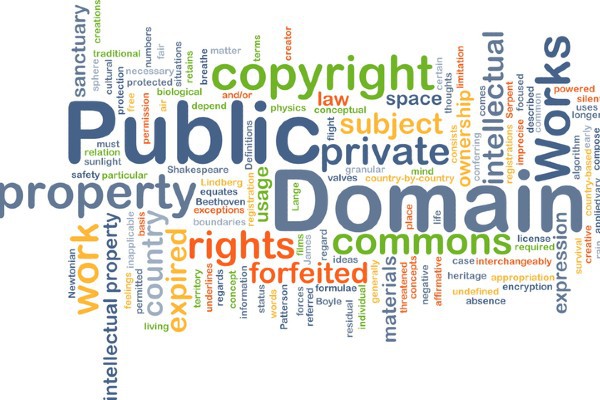
Did You Say Mickey Mouse Is Now in the Public Domain?
Copyright protection for the film Steamboat Willie expired on December 31, 2023. As a result, the earliest versions of Mickey and Minnie Mouse entered the public domain on January 1, 2024. Other famous characters entered the public domain the same day, including the original Peter Pan and Tigger. However, they have not caused as much of a stir as Mickey Mouse.
Projects using images of Mickey began cropping up on New Year’s Day, including two horror films. That doesn’t mean the mouse is fair game, however. Disney still holds copyrights on later iterations of Mickey Mouse as well as a host of trademarks involving the character and his name. Steamboat Willie may be in the public domain, but creators should be cautious about using the Mickey Mouse image.
Why Did Steamboat Willie Enjoy 95 Years of Copyright Protection?
Article I, Section 8, Clause 8 of the U.S. Constitution gives Congress the power “[t]o promote the Progress of Science and useful Arts, by securing for limited Times to Authors and Inventors the exclusive Right to their respective Writings and Discoveries.” The statutes governing copyright protection are enshrined in Title 17 of the United States Code.
Typically, copyright protection is granted to the author or co-authors of a work. However, 17 U.S. Code § 201(b) specifies that an employer or other person who hires someone to create a work is considered the author unless the parties otherwise agree in writing. Copyright duration is governed by 17 U.S. Code § 302.
Under the Copyright Act of 1976, copyright protection lasted for the author’s life plus 50 years for works owned by the author and created after January 1, 1978. The term for works made for hire was 75 years from the year of publication or 100 years from the year of creation, whichever came first. The 1976 Act adjusted the terms for works copyrighted before 1978 but not already in the public domain so that they’d have a total of 75 years.
The Copyright Term Extension Act of 1998 increased the terms for works owned by the author to the author’s life plus 70 years. Works made for hire enjoy copyright protection for 95 years from the year of first publication or 120 years from the year of creation, whichever comes first. Walt Disney Co. lobbied heavily for the bill, so it’s often called “The Mickey Mouse Protection Act.”
Does Disney Still Have Rights to Mickey Mouse?
When a work enters the public domain, it is no longer protected by copyright. Anyone is free to use it without the need for permission or the payment of royalties. However, only the first iteration of Mickey Mouse has entered the public domain. All subsequent versions are still protected by copyright, and they have distinctly different features than the character in Steamboat Willie. This is by design: The copyright office states that “it is not possible to extend the length of protection for a copyrighted work by creating a derivative work.” A derivative work must differ substantially from the original to be eligible for copyright protection.
Arguably, Disney cannot claim copyright to every element of the character, such as the red used for Mickey’s shorts or a squeaky voice for a mouse. However, using several of these elements could result in a copyright infringement claim.
More significantly, Disney owns many trademarks that cover the Mickey Mouse character. These include the words “Mickey Mouse,” the classic and modern Mickey Mouse designs, and a composite image showing how Mickey Mouse has evolved. Unlike copyrights, trademarks can last in perpetuity if the holder continues to renew them. Trademarks are meant to prevent consumer confusion, and creators can rest assured that Disney will continue to protect its brand.
How Can Creators Use Mickey Mouse?
Before Steamboat Willie entered the public domain, Mickey Mouse could only be used under the fair use exception to copyright law. This rule allows creators to use copyrighted works if they transform them into something new. Now, creators can use the earliest version of Mickey as long as they don’t stray into copying later versions.
Still, creators must take care not to violate Disney’s trademarks. Any use of the Steamboat Willie Mickey on goods and services could suggest to consumers that the products are produced by, connected to, or endorsed by Disney. The potential for consumer confusion could lead to a trademark infringement claim unless there’s a clear disclaimer or connection to another company.
Creators should also be aware of Disney’s international copyright and trademark registrations. Other countries have different durations for copyrights and distinct rules for trademark protection.
New Year’s Day is also known as Public Domain Day, when works first published 95 years earlier lose their copyright protection. Creators are now free to use the earliest versions of Mickey and Minnie Mouse, Peter Pan, and Tigger. Winnie the Pooh, Sherlock Holmes, and Zorro also entered the public domain in recent years. Creators are now free to use these works but must take care not to infringe on later versions or violate the owners’ trademarks.
Learn More About New Developments in Law
Stay up to date on the most current legal developments in California and the rest of the nation with Purdue Global Law School.
Purdue Global Law School offers an online Juris Doctor if you wish to become an attorney licensed in California. If you wish to advance your legal education but do not intend to become a practicing attorney, you may consider an online Executive Juris Doctor.
Single law courses are also available to help you explore a particular area of law without committing to a full degree program. Request more information today.

